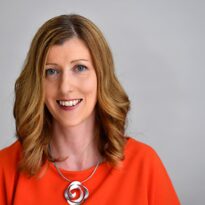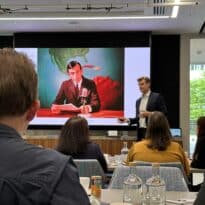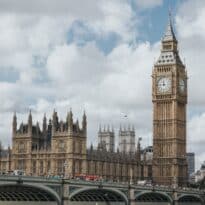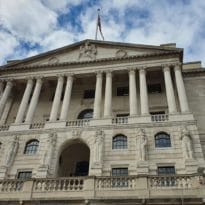Richard ‘Dickie’ Hodges, manager of the Nomura Global Dynamic Bond fund, gives his predictions on UK, US and European inflation as well as potential interest rate cuts. He emphasises the current opportunities, highlighting deeply subordinated bank debt (AT1s) as one of the best-performing asset classes, and gives his views for the second half of the year.
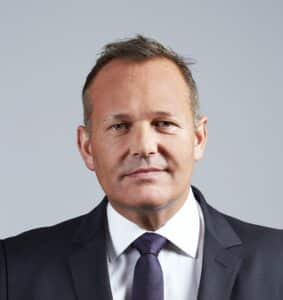
Why you should listen to the interview
Managed by the charismatic Dickie Hodges, the Nomura Global Dynamic Bond fund offers an excellent option for all market conditions in terms of both yield and capital return. This interview provides a glimpse into what’s considered in a global strategic bond fund today.
This interview was recorded on 12 June 2024. Please note, answers are edited and condensed for clarity. To gain a fuller understanding and clearer context, please listen to the full interview.
Interview highlights
Positioning the fund for three scenarios
“The first scenario is we have a softer landing. So at the moment, the market is expecting growth to actually slow, but we are not expecting a severe recession, as we saw from UK GDP numbers; we are stagnating, but at least it’s not falling considerably. So that’s what’s classed as a soft landing. Under the terms of a soft landing, we can expect inflation to come back down to target and moderately stay at target and therefore we can see interest rates being cut gradually. And so we are getting just slightly over 4% yield – so that’s essentially a 4% income – at the moment on UK government bonds that are 10 year. And then we should get some capital return which should lead us to some positive market returns over the course of the year. Under this scenario, the world is a nice place. You know, you should see higher yielding assets, high yield performing reasonably well. Emerging market debt should also perform reasonably well. The yield achievable on that is considerably greater.
“The other scenario that we have to think about is what if we go into a hard landing. And what I mean by a hard landing is economies deteriorate sharply. Now obviously there is evidence that economies are deteriorating, but if we actually have a real hard landing, we know from experience and historically, central banks cut rates very, very quickly. Under that sort of scenario, that would give negative returns for equities and risk assets. But it means that the borrowing costs will fall very quickly. So the cost of financing borrowing falls, and we should all be investing if we see equity markets falling 15% to 20%.
“The third scenario, which reasonably is remote, but nonetheless we should consider that — interest rates continue to go higher across developed economies. Now we know and we’ve been told by central banks that this is not going to be the case, but nonetheless, we have to consider that option.
“Under that option, you don’t want to have a lot of exposure to long-dated bonds, you want to have short duration or short maturity bonds that give you a greater yield. Now under these instances, you want to probably have a portfolio that’s delivering not that much interest rate sensitivity – we call it duration in bond markets. And very simply, the larger the duration number, if bond yields and interest rates are cut, the greater the return any fund manager’s going to deliver, a positive return. Obviously a smaller duration, it means less positive returns when interest rates are cut.
“Because we’re in this environment where we’ve yet to have interest rate cuts but we have great expectations that they will begin soon, on this portfolio, we are choosing to run a sensitivity to interest rates of around about five. Now, what that means is if interest rates are cut by 1%, the return on this fund will be a positive 5%. It’s very simple, that’s what duration is. It’s really just a measure of how much total return you are going to generate. So obviously somebody with a duration of 12, a hundred basis points lower or 1% lower, and they’re going to deliver potentially a 12% positive return. But because we have not cut rates yet, there is still this uncertainty. So we are choosing to manage the fund with the duration closer to five, but implementing strategies that will benefit from interest rates being cut later in the year.
“Principally though, we believe most of the interest rates that are coming collectively around the world, those cuts will be coming more so in the first half of 2025.”
Diversifying internationally
“The fact of the matter is we diversify across different countries where we see attractive returns. One example for you, we have exposure to South Africa in local currency bonds. Obviously if an investor, invests in this fund, they will be investing in the sterling fully-hedged share class, they would have no problems themselves about having exchange rate risk between the British Pounds and the South African Rand.
“But nonetheless, month to date, UK government bond market returns are probably about plus half a percent. South Africa bond market returns, fully hedged back into pounds, month to date is plus 3%. And a year to date, South Africa has positive bond market returns on a fully-hedged basis – so no exchange rate risk, back to pounds – it’s got positive year to date returns when the UK government bond market at the close of business yesterday was minus 4%. So that just gives you a reason why we look to internationally diversify our exposures to give a higher level of yield and a more attractive level of potential income and future capital returns.”
Backing fixed income for the second half of 2024
“It all depends on your view on interest rates. If let’s say bond interest rates remain where they are, bond yields remain where they are, that means from a fixed income perspective, you’ve still got six months worth of carry from an investment grade credit fund. That means you are probably going to generate another, let’s say 3-3.5% return, positive return, just in carry. And that will deliver positive returns year to date.
“And if we believe, if the market starts believing that there are going to be more than one interest rate cut this year, that is presently not priced into markets, that would lead to greater capital returns, and potentially you are looking at from here on in a 5-7% positive return in fixed income from this moment in time for the remainder of this year, plus 1-2% carry, or the income you get from holding these bonds for another six months.”
Conclusion
A sector as vast as that of strategic bonds needs a manager who has the rare ability to accurately read the economic environment, as well as pick individual investments. Dickie Hodges has repeatedly shown he is capable of doing both. As emphasised in this interview, he is incredibly knowledgeable about bond securities and derivatives and uses this skillset and a flexible mandate, to exploit opportunities.


